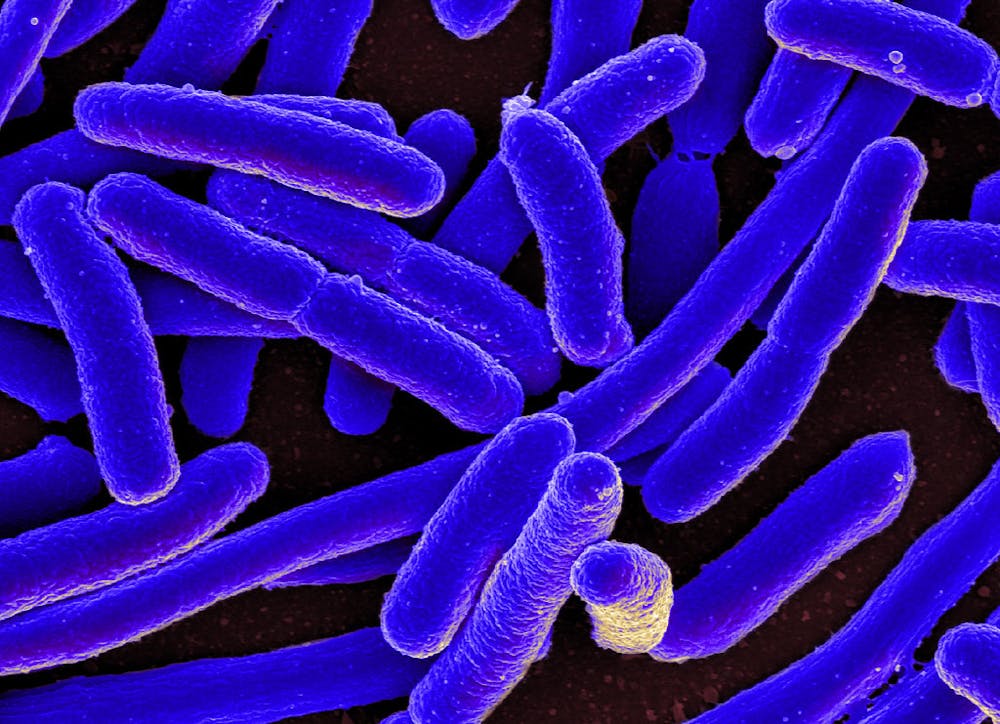This week’s news highlights work from researchers around the world whose focuses range from sleep deprivation to flexible robots. We invite you to take a moment to appreciate endeavors and advances in a variety of science fields made by experts around the globe.
Flexible robots without sensors are able to navigate mazes using just heat energy
A paper published in Science Advances by the Yin group at North Carolina State University explores the use of simple soft robotics to navigate challenging environments.
Soft robots take inspiration from nature by using soft yet resilient materials (like cartilage or muscle in animals) to perform numerous tasks in dynamic environments. Unlike traditional metal robots which are programmed for one task in ideally controlled settings, soft robots have high degrees of elasticity, allowing for smooth movement, diverse interactions with surroundings and even adaptations to changes in the environment.
The soft robots developed by the Yin group resemble a twisted ribbon. They are able to move using physical rather than computational or electric properties. So instead of using motherboards or powered appendages, the robot rolls autonomously when placed on a surface of 55 degrees Celsius/131 degrees Fahrenheit. Its movement is a consequence of the difference in warping between the material on the warm surface and the material in contact with room-temperature air.
The robot is unique in that it turns and moves in arcs capable of avoiding walls and obstacles. The ribbon-like structure is incredibly flexible; the robot’s back half is twisted regularly while its front half twists and coils even more around itself. This feature allows the robot to adapt to the presence of different types of obstacles.
The robot can even navigate mazes with moving walls and with entrances smaller than the robot’s diameter. The authors believe that this technology can be generalized and applied in the real world for monitoring or even harnessing heat energy in the environment. For example, the amount that the robot’s material warps over time may be used to calculate changes in surface temperature.
Sleep deprivation may harm long-term brain health
A group of scientists from Binzhou Medical University, China, published a paper in the Journal of Proteome Research describing the link between sleep deprivation and neurological damage.
The researchers used a large mouse model and examined how well mice were able to go through a maze when sleep-deprived. The results showed clear signs of cognitive impairment as a result of sleep deprivation, but the researchers wanted to further examine some of the driving molecular causes of this phenomenon.
Using proteomics, or advanced tools to study the sum of all proteins acting in cells, 164 proteins were found to either be significantly over- or under-expressed in the hippocampus, a brain region that plays a crucial role in memory.
One protein, pleiotrophin (PTN), was found to be correlated with cognitive impairment. Evidence shows that insomnia-induced PTN under-expression leads to the death of neurons and different hippocampal cells. Interestingly, the authors suggest that PTN concentration could be used as an objective metric for insomnia.
Engineered Escherichia coli performs double duty in generating electricity and processing wastewater
Scientists from the École Polytechnique Fédérale de Lausanne (EPFL), a school in Switzerland, recently published a paper in Joule, engineering E. coli to generate electricity while consuming organic waste.
It has been found that some bacteria species use extracellular electron transfer (EET) for metabolic processing. There are multiple mechanisms for EET across different species, but the process essentially involves the transfer of an electron from the cellular membrane to the natural extracellular solution using dissolved metals as catalysts. Because the transfer of electrons produces electricity, EET organisms can be leveraged for electricity production.
However, the organisms that exhibit this unique trait only survive in very controlled environments, whereas organisms that can adapt to a variety of conditions, like E. coli, do not display EET. The inventive team at EPFL engineered E. coli to produce EET-specific membrane proteins.
They found that the bioengineered E. coli could produce electricity while consuming a variety of organic compounds, including organic waste. The authors posit that this can lead to advances in sustainable technology development, biosensing and electrosynthesis.
Onions can introduce meaty flavors to vegetarian food products
There are many vegetarian alternatives to meat products on the market: vegetarian burgers, vegetarian sausages and more. However, much of the time those foods might not feel hearty enough or may leave meat-lovers wanting more. Sometimes synthetic additives are used to add the depth of flavor that meat alternatives may otherwise lack.
A study from a group at the University of Hohenheim, Germany, published in the Journal of Agricultural and Food Chemistry, shows that fermented onions can provide some of these desired “meaty” flavors.
Some species of fungi are used to produce meaty flavors from synthetic sources such as mixtures containing natural extract along with magnesium sulfate, potassium phosphate and other chemicals. The researchers wanted to see whether these fungi could generate meaty aromas and flavors from pure vegetables and spices. It was found that species within the Allium family, such as onions, were able to produce the desired meaty flavors when fermented with the fungi for 18 hours.
After fermentation, a chemical analysis revealed that many odorants resemble those found in meats and have high levels of sulfur, which also contributes to the meaty aroma. Plant-based additives are more attractive than synthetic ones because they are safer and less environmentally taxing to produce. Thus, these results may be used in the plant-based meat industry to introduce meaty flavors without synthetic additives.





